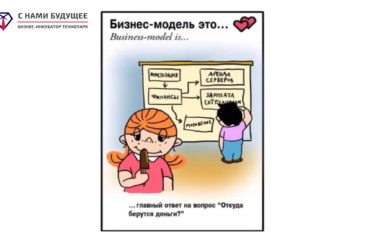Statistically, up to 90% of startups fail in the early stages. An unimaginable amount of money and time is invested in them, but they do not bring the proper results. In this article we will tell you about such a notion as Customer Development (abbreviated as CustDev) and why it is many times more effective than the classic project approach.
Why aren’t they buying from me?
Let’s start with the most trivial problems of any entrepreneur. He has a unique business idea, but lacks the necessary knowledge and sufficient funding. A start-up starts a project, invests money in advertising and waits for profit, but it doesn’t flow like a river. At this point, he has doubts about it:
- the price of its product or service;
- ineffective advertising;
- of the object of sale itself.
This uncertainty does not leave the entrepreneur until the close of his business.
So what’s wrong?
The problem with most startups is incorrect thinking. As logical as it may sound, a product or service is created for a specific audience. And if you don’t have one, all your work loses its value.
Imagine you wanted to open a gas station in the middle of the desert. That’s a pretty lame idea, isn’t it? Yes, gasoline is vital to motorists, but it is worthless on its own when there is no demand for it. Even if you spend millions on advertising, no one will come to your desert anyway. Your fuel may be the best in the world, but it’s your mindset that won’t let drivers know it.
After a clear example, we can conclude that customers in any business are much more important than the product or service itself.
What is Cust Dev?
Customer Development is an approach to creating startups, businesses, new products or services in which the most important aspect is customers and solving their problems. This method provides an answer to any consumer’s product problem.
The main differences between Kastdev and classical project approaches:
- searching for clients and identifying their needs;
- testing the audience on their willingness to buy the values they are offered;
- Research the development team on the ability to create a product without significant cost.
Get to know your customer
In order to understand whether a product or service will be in demand, it is necessary to interview potential customers. There are two types of interviews:
- problematic. In this case, you need to identify the presence of the problem and find the cost of solving it for the client;
- It’s a solution. Conducted to determine the customer’s readiness to consume the product and also helps to find out if the objective is being met.
Customer surveys play a huge role in a startup. It is therefore important to ask respondents the right questions, which are expected to be answered thoroughly. The following are bad and good questions to help you see the difference.
Wrong questions:
× what do you think of this idea?
× Do you like our product?
× how much money are you willing to spend to purchase it?
Correct questions:
✓ Tell us in detail about your problem: how often do you encounter it and what solutions do you have?
✓ how much money did you spend on a possible way out of this situation?
✓ are you looking for solutions now?
After a few examples, the difference becomes obvious. If you want to create a product that solves any buyer problems, ask them about it yourself. Do not ask closed-ended questions to avoid inaccuracies in the data you collect.
The path to 100 percent results
CustDev is defined by four steps:
- Hipothesis – constructing hypotheses to be tested;
- Action – the stage of taking action based on hypotheses;
- Data – getting information;
- Insight – collecting the results of the received information.
Keeping this approach consistent and cyclical allows the entrepreneur to test their ideas, find the right customers, identify problems and fix them through their product or service. Let’s consider the stages in more detail:
- Value Proposition (CP). The start of a business is always an idea. Think about who your target audience (TA) might be. What problems they have to face, and in the course of what events they appear. Then select one task that you are ready to solve and develop a CP;
- Problem validation. Using your own experience, interview your CA about their problems in order to verify the hypotheses. This can be done through a phone call, a street survey or the Internet;
- Modelling the economics. This step requires estimating all the costs of product development and customer acquisition. If costs exceed revenues, you need to reconsider the problem, its solution, target audience, or abandon the idea altogether, deeming its implementation impractical;
- Manual Solution Concept (MVP). Develop a prototype of the future product that will already perform at least a minimum of its functions at this stage;
- Solution validation. Collect customers’ wishes and comments regarding the assembled prototype. Then improve it and demonstrate it again. This way you can show the main features of the product without any major cost and make a decision to introduce it to the market;
- First sale. If all the previous points have been successfully passed, it’s time to test the product on the first customers and start working on optimizing the attraction channels.
Bottom line
Customer Development is the most appropriate method for business and startup development. Through communication with customers, he helps in the early stages of product development to identify customer problems, their possible solutions, calculate all costs, create a working prototype and with minimal risk to launch the first sales.






You must be logged in to post a comment.